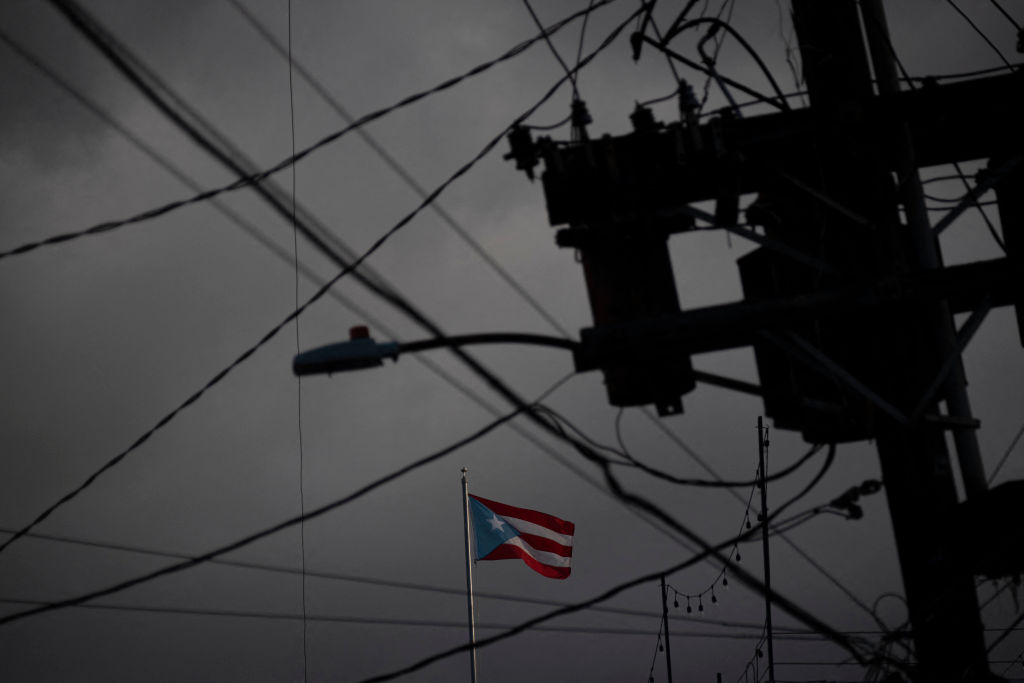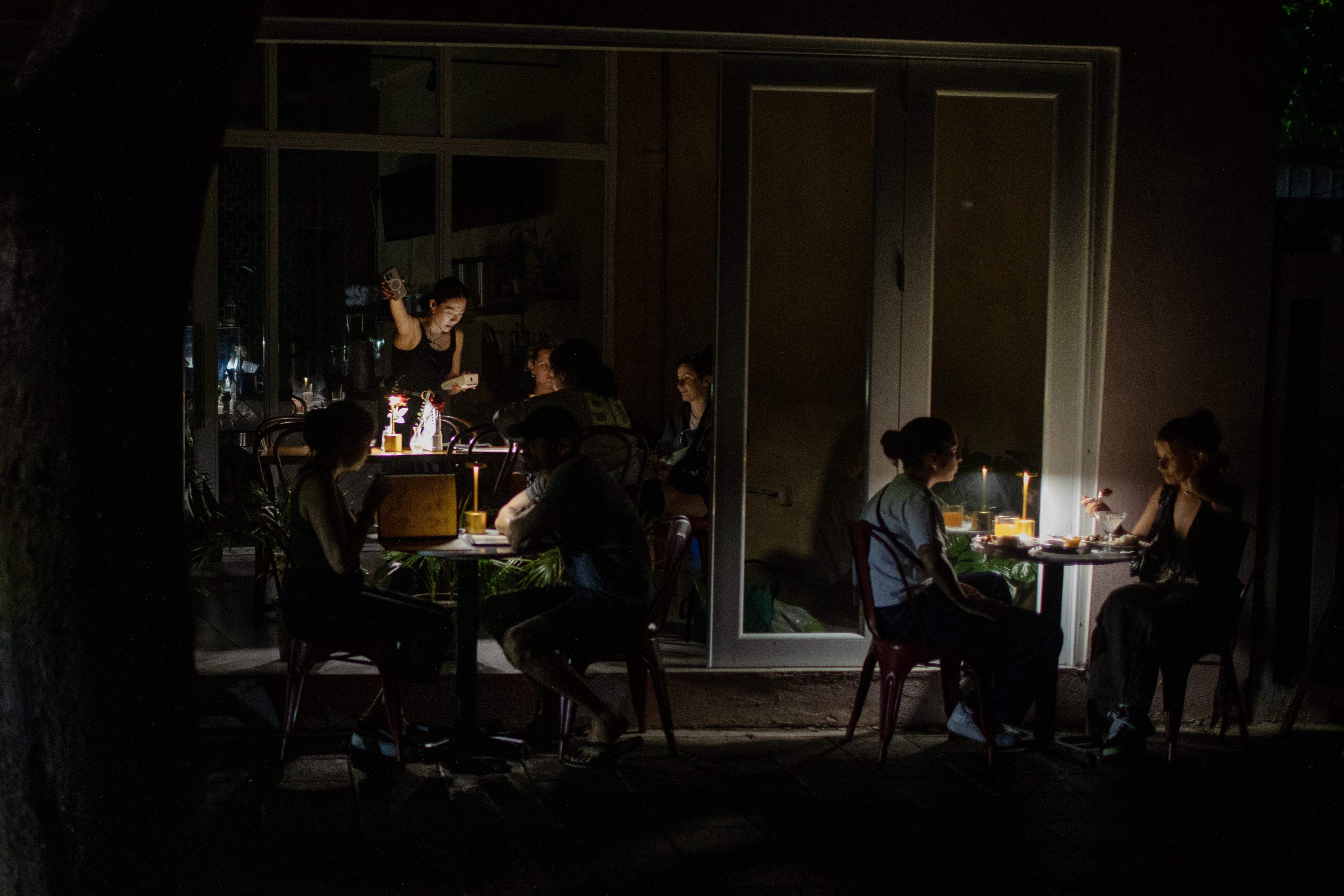Puerto Rico Blackout: What to Know & How to Prepare!
'Massive Blackout' Plunges Puerto Rico into Darkness: Your Ultimate Guide
Introduction: Lights Out in Puerto Rico - What's Happening?
Imagine flipping the light switch and… nothing. No hum, no glow, just utter darkness. That's the reality for nearly all of Puerto Rico right now. A massive blackout has struck the island, leaving residents scrambling for answers and bracing for what could be days without power. We're diving deep into the situation to bring you the latest updates, the reasons behind this widespread outage, and what you can expect in the coming hours and days. This isn't just a power outage; it's a disruption of daily life.
The Shocking Numbers: Scale of the Blackout
Let's talk numbers. According to LUMA Energy, the private power company responsible for Puerto Rico's grid, approximately 1.1 million customers, representing roughly 76% of the island's 1.4 million customers, are affected. That's a staggering amount of people suddenly without electricity. Think of your own town or city – now imagine almost everyone experiencing a blackout simultaneously. It's a logistical nightmare and a serious challenge for residents and authorities alike.
LUMA Energy's Statement: What We Know So Far
LUMA Energy has attributed the blackout to the “unexpected shut down of all generation plants, including those of Genera…” While the exact cause of this shutdown is still under investigation, the company acknowledges the severity of the situation. They've stated that restoring power could take up to 48 hours, citing the complexity of the island's aging infrastructure. This 48-hour estimate is crucial – residents need to prepare for a prolonged outage.
The Aging Grid: A System Under Stress
Why is Puerto Rico's Grid So Vulnerable?
The truth is, Puerto Rico's power grid has been in a precarious state for years. Decades of neglect, underinvestment, and damage from hurricanes have left the system vulnerable to disruptions. Think of it like an old car – eventually, even with regular maintenance, age takes its toll. The grid is struggling to keep up with the demands of the 21st century, and this blackout is a stark reminder of that fact.
Hurricanes and Their Devastating Impact
Hurricanes Maria and Fiona dealt devastating blows to the island's infrastructure, including the power grid. Transmission lines were downed, power plants were damaged, and entire communities were left without electricity for months. While efforts have been made to rebuild, the system is still far from resilient. These storms exposed the deep vulnerabilities of the grid and highlighted the urgent need for modernization.
What To Expect: The Next 48 Hours
LUMA Energy estimates up to 48 hours for full restoration. But, what does this really mean for you?
- Limited Communication: Cell service may be spotty due to overloaded networks and lack of backup power at cell towers.
- Potential Water Shortages: Many water pumps rely on electricity, so water pressure may decrease or water service may be interrupted.
- Food Spoilage: Refrigerated food will spoil quickly, so prioritize perishable items.
- Traffic Congestion: Traffic lights will be out, leading to increased congestion and potential accidents.
- Business Closures: Many businesses will be forced to close, impacting the economy and access to essential goods and services.
Preparing for the Worst: Essential Steps to Take Now
Stock Up on Essentials
If you still have access to a store, stock up on bottled water, non-perishable food, batteries, flashlights, and any necessary medications. Think about what you would need if you were stranded in your home for a few days.
Conserve Water
Fill bathtubs and containers with water for washing and flushing toilets. Water is a precious resource, especially during a blackout.
Charge Devices
If you have any portable chargers or power banks, make sure they are fully charged. These will be your lifeline for communication.
Stay Informed
Monitor local news and radio for updates on the blackout. Information is key to staying safe and making informed decisions.
The Role of LUMA Energy: Scrutiny and Criticism
LUMA Energy's handling of the power grid has been a subject of much debate and criticism since they took over operations. Critics argue that the company has not done enough to improve the grid's reliability and resilience. This blackout is likely to intensify the scrutiny and calls for accountability. Is LUMA Energy truly equipped to manage Puerto Rico's complex energy needs?
Government Response: What Actions Are Being Taken?
The Puerto Rican government is likely mobilizing resources to assist affected communities. This may include providing generators to hospitals and critical infrastructure, distributing water and food, and coordinating with LUMA Energy on restoration efforts. However, the effectiveness of the government's response will be crucial in mitigating the impact of the blackout.
The Economic Impact: A Devastating Blow
Island-wide blackouts have a significant impact on Puerto Rico's economy. Businesses are forced to close, productivity declines, and the tourism industry suffers. The costs associated with spoiled food, lost wages, and emergency repairs can be substantial. This blackout could set back Puerto Rico's economic recovery efforts and further strain its already fragile economy.
Beyond the Blackout: The Long-Term Solution
Investing in Renewable Energy Sources
One potential solution is to invest in renewable energy sources such as solar and wind power. These sources are more resilient to disruptions and can help diversify the island's energy mix. Imagine Puerto Rico powered by the sun and wind – a more sustainable and reliable future.
Modernizing the Grid
A comprehensive modernization of the power grid is essential. This includes upgrading transmission lines, installing smart grid technologies, and improving the overall efficiency of the system. This is a long-term investment that will pay dividends in the form of increased reliability and reduced outages.
The Human Cost: Stories from the Ground
Behind the numbers, there are real people struggling to cope with the blackout. Families are worried about food spoilage, elderly residents are vulnerable to heatstroke, and businesses are losing money. It's important to remember the human cost of this crisis and to offer support to those in need. The people of Puerto Rico are resilient, but they need our help and understanding.
Community Resilience: How Puerto Ricans Are Coping
Despite the challenges, Puerto Ricans are known for their resilience and community spirit. Neighbors are helping neighbors, sharing resources, and offering support. This sense of community is a powerful force that helps the island weather even the most difficult storms. It's a reminder that even in the darkest of times, humanity shines through.
Lessons Learned: Preventing Future Blackouts
This blackout is a wake-up call. It highlights the urgent need for a comprehensive plan to improve Puerto Rico's energy infrastructure and prevent future disruptions. We need to learn from this crisis and take concrete steps to build a more resilient and reliable power grid. The future of Puerto Rico depends on it.
Conclusion: Staying Informed and Prepared
The 'massive blackout' in Puerto Rico is a serious situation with far-reaching consequences. Stay informed, prepare for potential disruptions, and support your community. While the timeline for full power restoration remains uncertain, remember the estimated 48-hour restoration window. The resilience of the Puerto Rican people, coupled with a long-term commitment to modernizing the island's energy infrastructure, will be key to overcoming this challenge and building a brighter future.
Frequently Asked Questions (FAQs)
- How can I stay updated on the power restoration progress?
Monitor LUMA Energy's official website and social media channels for the latest updates. Also, tune into local news stations for real-time information. - What should I do if I have a medical condition that requires electricity?
If you rely on electrically powered medical equipment, contact your healthcare provider immediately and develop a backup plan. Consider relocating to a facility with generator power if possible. - Is it safe to use generators indoors?
Never use generators indoors! Generators produce carbon monoxide, which is a deadly, odorless gas. Always operate generators outdoors in a well-ventilated area, far away from doors and windows. - What should I do with refrigerated food that has spoiled?
Discard any perishable food that has been above 40°F (4°C) for more than two hours. "When in doubt, throw it out" is a safe motto to follow. - How can I help my community during the blackout?
Check on elderly neighbors, share resources with those in need, and volunteer with local organizations that are providing assistance to affected residents.



